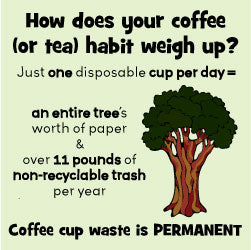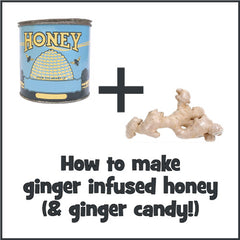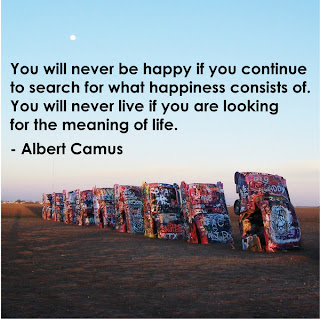Fads. I can't stand them. Almost to a fault.
Bacon? No. Get over it. We're unhealthy enough as it is.
Mustaches? I used to love them, I tried to avoid hating them, but when I heard about a mustache growing reality show, I started to tip.
Owls? I've collected them most of my life, the owl is my spirit animal and I wish I had them back (to myself), but those can stay (I think rainbows and owls might be the only fads I'll never get sick of. At least I hope I won't).
Tropical "super fruits"? Blueberries are better than most, and they're a native food (if you live in the US).
I recently realized, that when I start getting sick of hearing about something, it usually means that it's about to get really popular.
I'm not trying to claim I'm cooler than anyone because I get sick of things easily. Pretty much the opposite. Like I said, I'm against fads almost to a fault (my favorite band didn't get less awesome because more people liked them, so why don't I like them anymore?). I actually got nervous a while back when I started to hear about
calendula in the media. Hating things because other people like them is not something to be proud of. Although I won't go as far as to jump on the hipster-hating bandwagon (see?).
What my dislike for fads does do, though, is help me be more critical of things. Critical in a positive way. Critical thinking. It helps me to be able to look at things objectively, no matter how much I'm surrounded by good or bad things said about them. It helps me cut through the hype (ok, it's also partly because I'm an over-thinking Cancerian).
About a year ago, I got my cholesterol levels checked. I'm a 16-year vegetarian who doesn't eat much dairy or eggs regularly, and is in love with fresh vegetables, so I was surprised to find out that my LDL (bad cholesterol) levels were so high that my doctor was thinking of putting me on medication. High cholesterol runs in my family, so I wasn't totally shocked, but definitely surprised. Especially since in the last couple tests, it was only slightly high, but "nothing to worry about".
What had happened to increase my LDL in one year?
I cut back on: drinking (no), fried foods (no), dairy & eggs (no). I started eating more leafy greens (no), and started replacing many fats with coconut oil (wait a second...). Those were my only dietary changes. Cutting back on "bad" things, and adding "good" things.
I had started eating coconut oil based on the hype. Against my better judgment. I could feel something inside me saying that solid at room temperature meant that it wasn't a good oil for nutrition, but I like experimenting. I wanted to see if my health would change by eating more coconut oil, and less of other fats. As I was eating the coconut oil, I couldn't stop thinking about how I had only heard good things about it, and how people claimed that old studies were wrong, and it was actually "good for you". Seriously, I hadn't heard one bad thing, which pretty much always means something is fishy. There's always a bad side, at least to someone. Even a rainbow, possibly the happiest thing in the world, needs rain (I happen to love rain, but lots of people hate it).
And it kind of seems that coconut oil did have a bad effect on my health.
Now, my scientific side was, and still is, telling me there is no way I could blame the high LDL levels entirely on coconut oil. I don't know for sure. There are other factors. I can't narrow it down to one without an official experiment. But, my intuitive side told me to stop eating it. Completely (well, not completely... I think I still eat it on occasion if I have a vegan dessert). And I started feeling better. I haven't had my cholesterol rechecked yet (soon!), but since then I've also quit smoking so I still won't know for sure if it was the coconut oil. I just have a feeling.
At the time, I sent out a post to
Wunder Budder's Facebook fans telling them about my experience, and asking if anyone else had a similar experience. Unsurprisingly, the answer was no. "Coconut oil is the best", "coconut oil is a super food", etc. I don't blame anyone for believing the hype. It's hard not to. I even started to wonder if my intuition was wrong.
And then I forgot all about it...
until today.
I'm taking a
COURSERA class on nutrition. This week, the first class, is an overview of nutrition. In the lecture on fats, the teacher mentions coconut oil. Coconut oil as being "heart unhealthy" fat and as raising LDL levels.
What? Yes! I knew it! (More than I hate fads, I love when my intuition is proven right.)
Good news for my intuition (really, I got so excited, that I took a break from class to write this blog), bad news for everyone who has been adding coconut oil to their diets based on the latest fads and "information".
The teacher also mentioned that we'd talk more about it later (since this was just an overview). When we do, and when I do more research on my own, I'll be back to share.
I'm not telling anyone to stop eating coconut oil, or that I know more than some of the "experts" (are they really experts?) out there, but I do find this information interesting and important enough to share. Especially with the amount of people basing their diets on coconut oil. If you haven't heard about it, some people even add it to their diets where there were previously little to no fats, like in smoothies. Seriously. The hype is that good. But, it seems that might be all it is... hype.
Now, back to class.
XoXo,
Lisa
EDIT: I should probably clarify things and mention that one of the main reasons people say that coconut oil is ok for cholesterol is that it increases the levels of HDL (the "good" cholesterol). This is true, but it's only a half-truth. The full truth is that it increases ALL cholesterol. The good and the bad. If you're looking for a healthy oil, this is not it, no matter what the hype says.










